Lighting Design Was The Star Of Salone Del Mobile 2022
A bright spot for the event’s 60th anniversary.
Earlier this month, Milan Design Week was busy with Salone Del Mobile, the world’s foremost interior design fair. For the event’s 60th anniversary—the first to return in-person since 2019—over 2,000 exhibitors showcased their latest wares, including over 600 designers under age of 35.
It was the biggest, and most successful iteration yet, and had a strong international presence with designers coming from across Europe, the Middle East, Asia, and North America. “We believe in a Salone that breaks down barriers, becoming a cultural bridge, welcoming everyone without distinction, in the name of ethical and responsible design,” says Maria Porro, Salone del Mobile’s president, the first woman to hold the job since joining last year.
While the trade fair is known for its cutting-edge furniture (specifically, modular loveseats), the star of this year’s event was the lighting design. Whether it’s Magritte-inspired lamps or traditional Italian glass chandeliers, here are some of the lighting designs that made a splash at Milan’s design week this year.
Andrés Reisinger
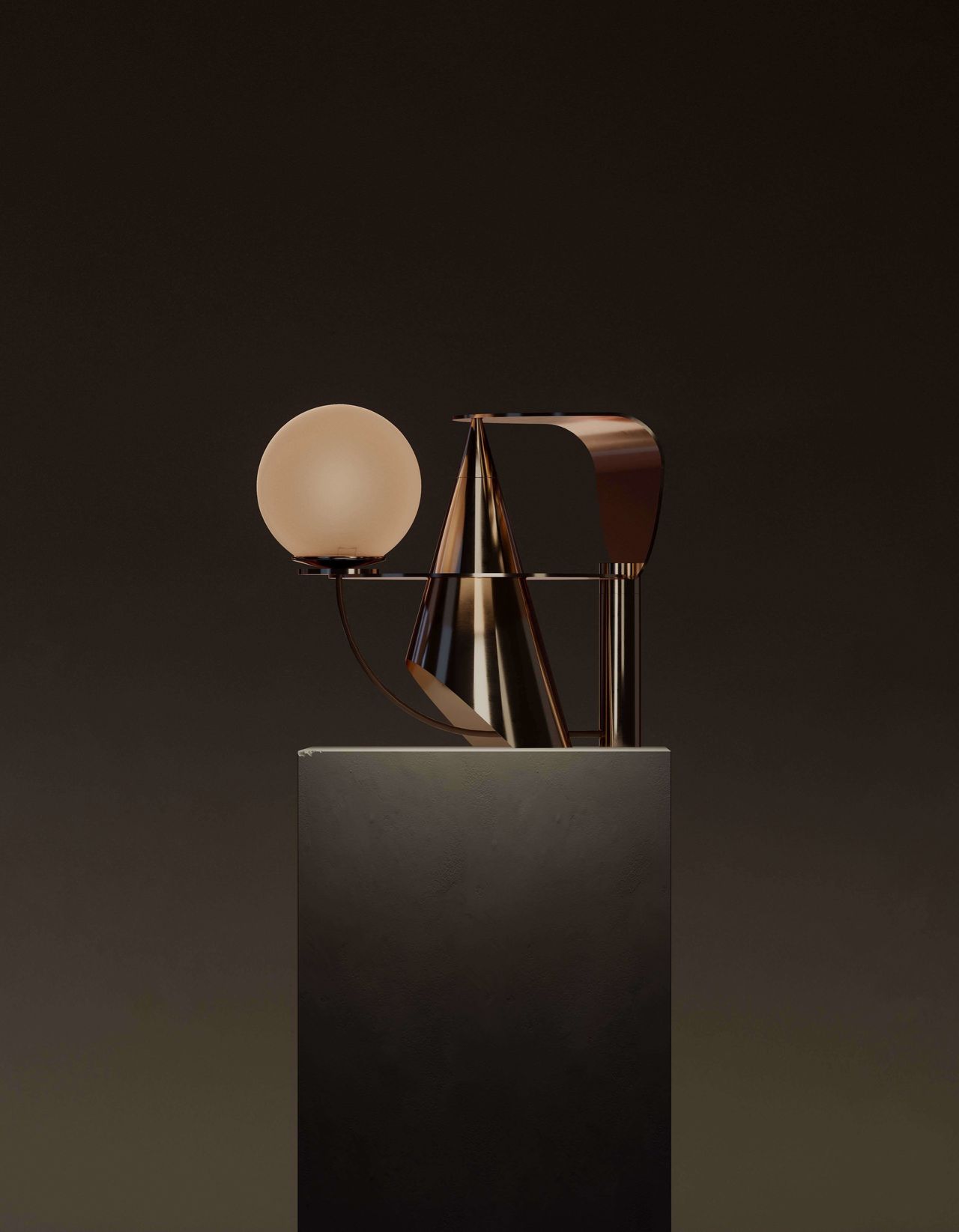
The Argentinian designer showcased his latest modern lamps at the Nilafur showroom, which are inspired by the free jazz movement of the 1950s and 1960s. Titled “Too Much, Too Soon!” These geometric lamps are what the designer calls “illuminated sculptures.” He explains that even though he is a digital native (he was born in 1990), the digital world cannot reproduce light the same way that a lamp can. “Reflecting, absorbing, playing with light is a physical experience,” Reisinger says. “So it’s unnecessary to reproduce it in the digital realm, because it’s simply ineffective.”
Lee Broom
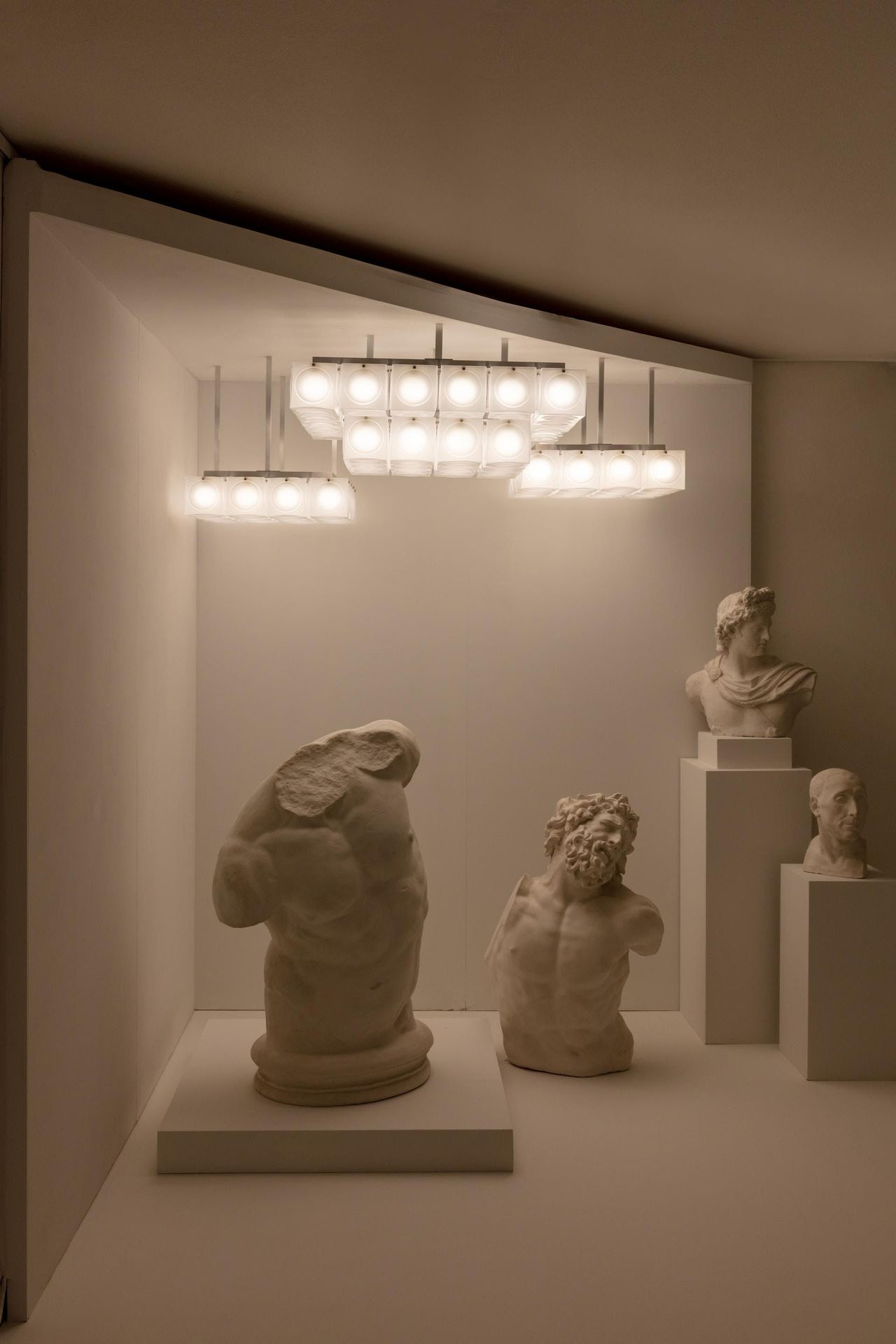
British designer Lee Broom brought his work to higher levels with his new lighting collection, Divine Inspiration, on the brand’s 15-year anniversary. These minimal light pieces—some even inspired by Brutalist architecture—are Broom’s biggest production to date. The lighting fixtures are made from carved oak wood, aluminum, plaster, and Jesmonite, all of which were handmade in his London factory.
“Designing this collection to celebrate 15 years, I decided to look back at some of the things that inspired me to be a designer in the first place,” Broom says. “So, I started looking at the Brutalist architecture I grew up with as a child, a period of architecture that I love. Delving deeper my attention became engaged with brutalist places of worship. This led me on a fascinating journey to researching cathedrals, temples, and churches from antiquity to mid-century, to the present day.”
Barovier&Toso
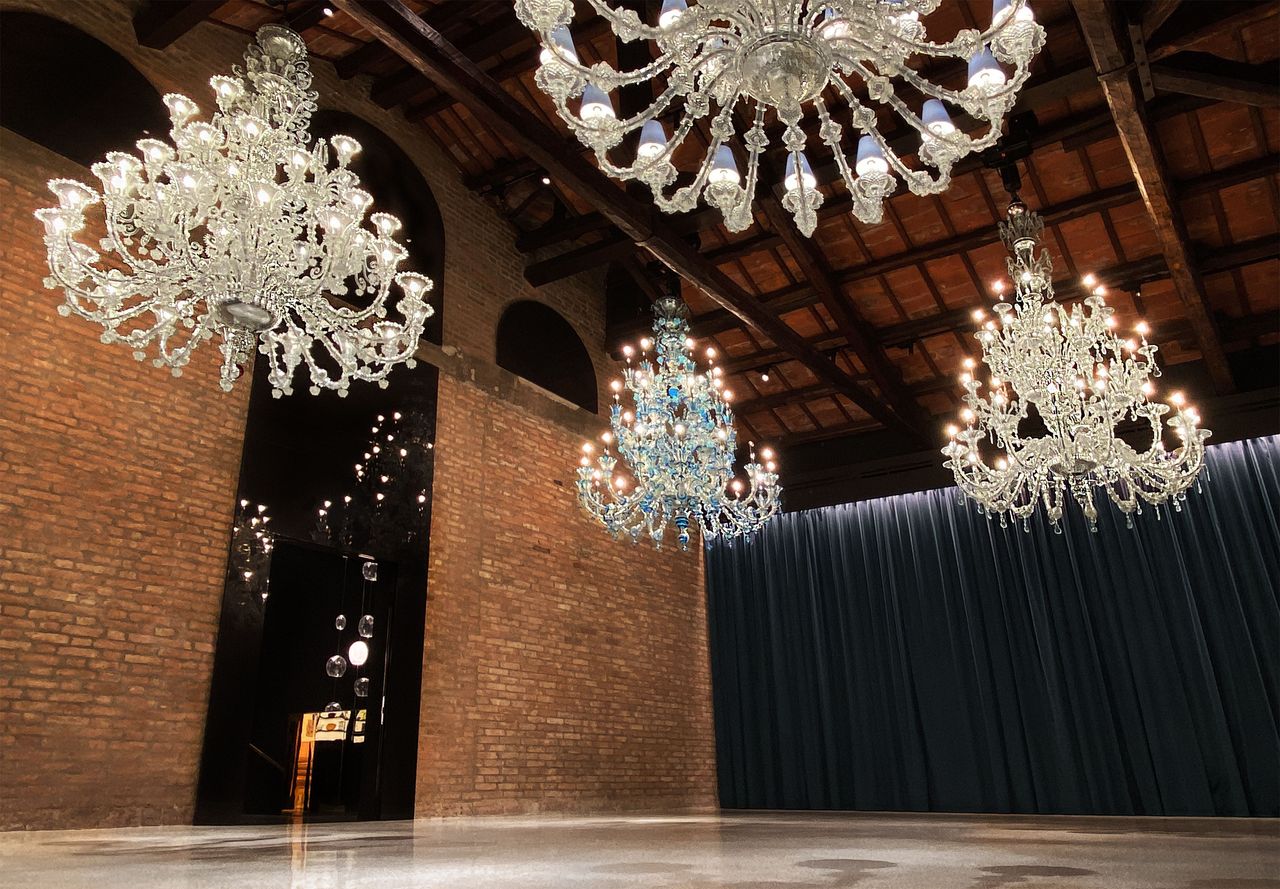
The Venetian glassmaking company debuted its latest glass chandelier, called the Magritte, inspired by French surrealist painter Rene Magritte. The clear glass chandelier with 48 light bulbs takes the traditional glassmaking on the Venetian Island of Murano, which is where the firm has had its headquarters for 700 years, and updates it for modern interiors. As Magritte once said, “Banish the already seen from the mind and seek the unseen.”
Toiletpaper Living
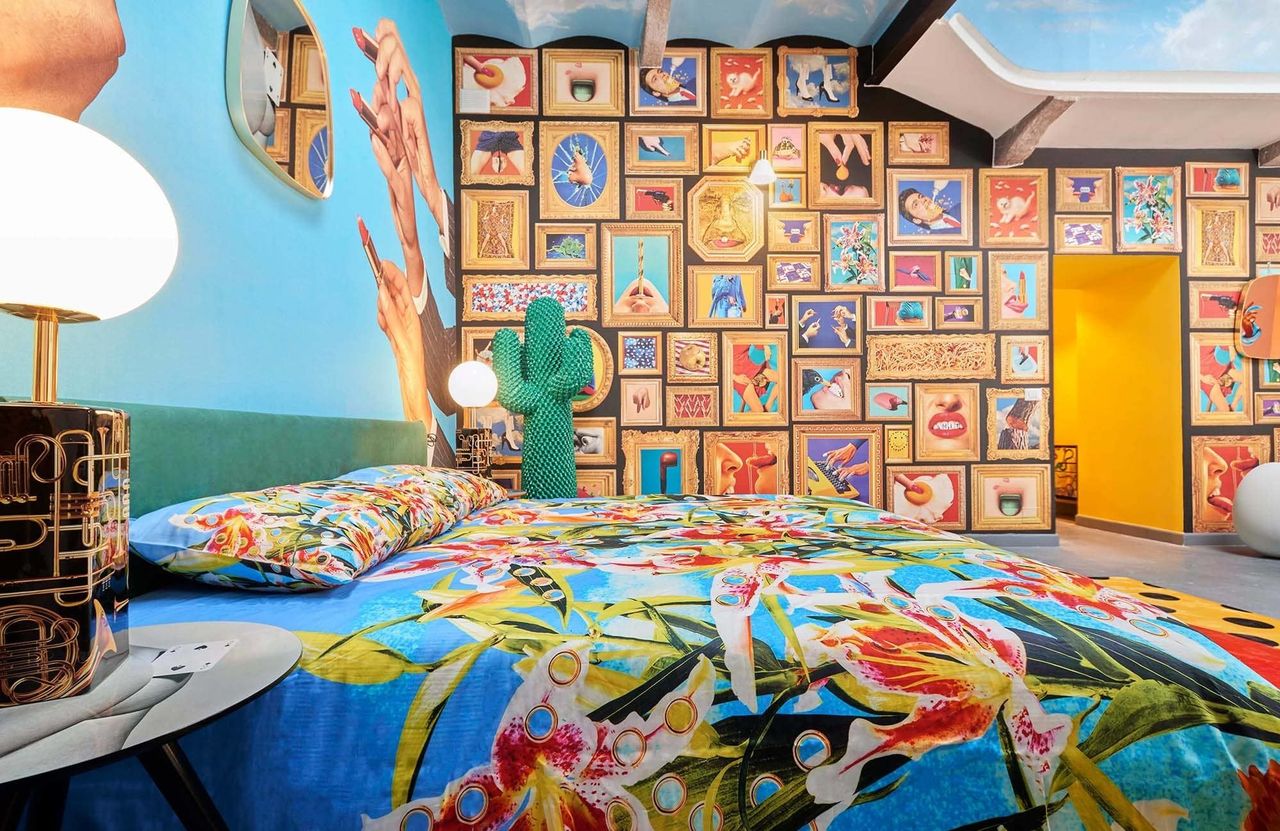
We might know Toiletpaper as the retro-inspired art magazine co-founded by artist Maurizio Cattelan and photographer Pierpaolo Ferrari. Now, the duo has made their way into product design with Casa Toiletpaper. This Milanese home doubles as both a showroom for their latest furniture design, and is an AirBnB,. They call this property “an unmistakable design” where visitors can “live in a work of art.” Their latest series of housewares, as part of their Toiletpaper Home collection, has lamps that are surrealist-inspired works of art, too. With a simple round glass globe on a black rectangular base. There are four design variations: a trumpet, snakes, playing cards, and lipstick patterns.
Lodes

The Italian lighting brand opened its first showroom in Milan for design week, set in the heart of the city’s Brera district, Milan’s most notable creative neighbourhood. The company’s latest design collections including Volum (designed with Snøhetta), Flar (designed with Patrick Norguet), and IVY (designed with Vittorio Massimo). The Volum series features an icy white bulb, which pays tribute to the Italian tradition of globe-shaped lamps, made of glass. Oslo-based designers Snøhetta said the historic craft of glassmaking was the inspiration. “Viewing something as above, below or next to something else, to a light source, it needs to be as functional and beautiful from all prepositions in space,” says Marius Myking, the director of products at Snøhetta. “The Volum series solves this in its technical solution, while celebrating the craft of glassmaking.”
Formafantasma x Maison Matisse
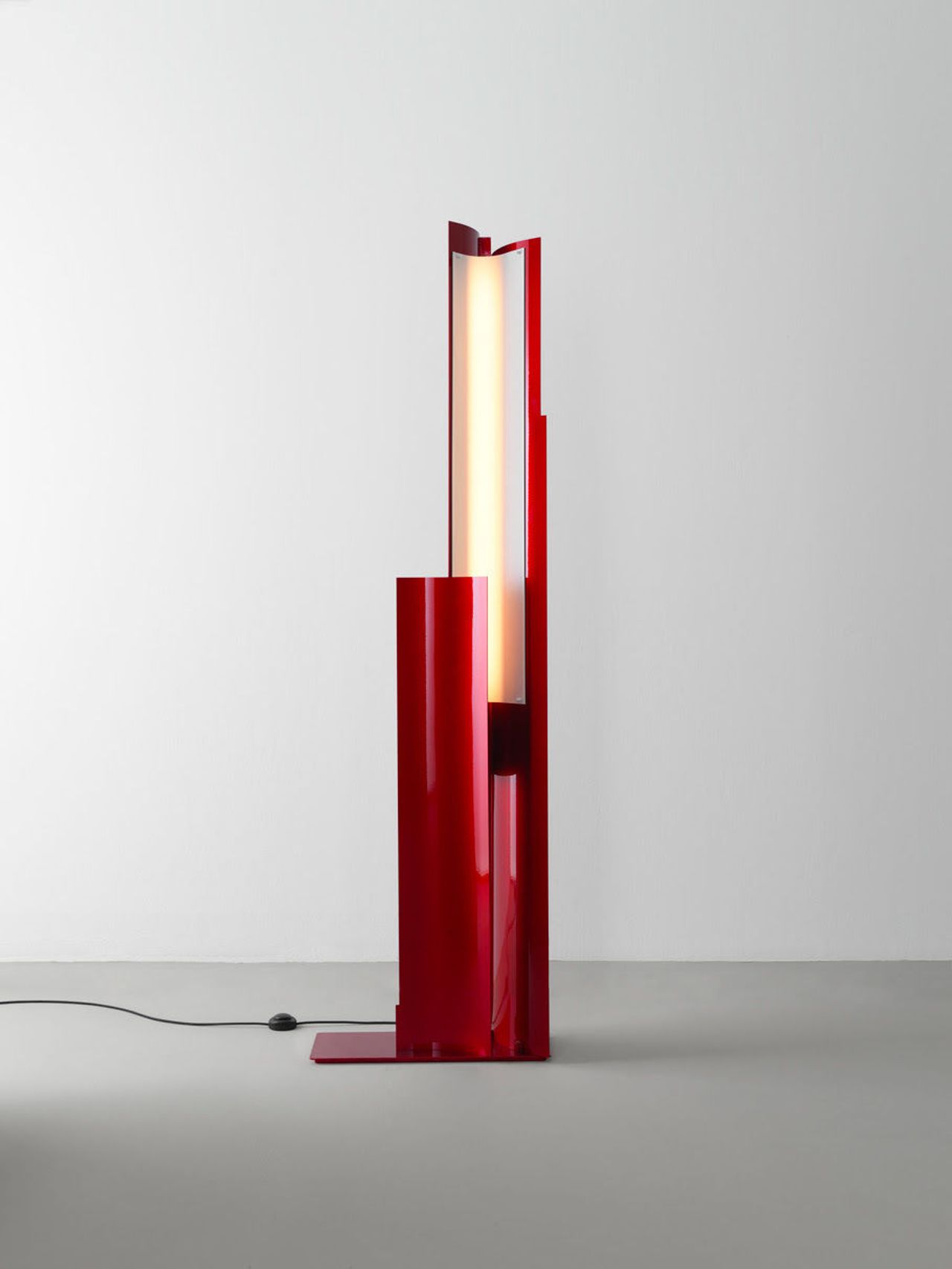
The design company Formafantasma collaborated with Maison Matisse, a design firm run by the family of French artist Henri Matisse, to create limited-edition lamps inspired by the artist’s creations. They call the series “Fold,” and these angular, abstract light fixtures are intended to “reinterpret the inventive paper cut-outs and pure colours of Henri Matisse.” Many of the metal lamps look like seaside shapes that Matisse would draw while living in the French Riviera. And some use his trademark cobalt blue. They unveiled the new series last week at Showroom Studio Nerino. The design team worked with folded paper mock-ups before creating the digital designs, as folding paper for 3D compositions was one way Matisse created art.
 Copyright 2020, Dow Jones & Company, Inc. All Rights Reserved Worldwide. LEARN MORE
Copyright 2020, Dow Jones & Company, Inc. All Rights Reserved Worldwide. LEARN MORE
This stylish family home combines a classic palette and finishes with a flexible floorplan
Just 55 minutes from Sydney, make this your creative getaway located in the majestic Hawkesbury region.
As Paris makes its final preparations for the Olympic games, its residents are busy with their own—packing their suitcases, confirming their reservations, and getting out of town.
Worried about the hordes of crowds and overall chaos the Olympics could bring, Parisians are fleeing the city in droves and inundating resort cities around the country. Hotels and holiday rentals in some of France’s most popular vacation destinations—from the French Riviera in the south to the beaches of Normandy in the north—say they are expecting massive crowds this year in advance of the Olympics. The games will run from July 26-Aug. 1.
“It’s already a major holiday season for us, and beyond that, we have the Olympics,” says Stéphane Personeni, general manager of the Lily of the Valley hotel in Saint Tropez. “People began booking early this year.”
Personeni’s hotel typically has no issues filling its rooms each summer—by May of each year, the luxury hotel typically finds itself completely booked out for the months of July and August. But this year, the 53-room hotel began filling up for summer reservations in February.
“We told our regular guests that everything—hotels, apartments, villas—are going to be hard to find this summer,” Personeni says. His neighbours around Saint Tropez say they’re similarly booked up.
As of March, the online marketplace Gens de Confiance (“Trusted People”), saw a 50% increase in reservations from Parisians seeking vacation rentals outside the capital during the Olympics.
Already, August is a popular vacation time for the French. With a minimum of five weeks of vacation mandated by law, many decide to take the entire month off, renting out villas in beachside destinations for longer periods.
But beyond the typical August travel, the Olympics are having a real impact, says Bertille Marchal, a spokesperson for Gens de Confiance.
“We’ve seen nearly three times more reservations for the dates of the Olympics than the following two weeks,” Marchal says. “The increase is definitely linked to the Olympic Games.”

Getty Images
According to the site, the most sought-out vacation destinations are Morbihan and Loire-Atlantique, a seaside region in the northwest; le Var, a coastal area within the southeast of France along the Côte d’Azur; and the island of Corsica in the Mediterranean.
Meanwhile, the Olympics haven’t necessarily been a boon to foreign tourism in the country. Many tourists who might have otherwise come to France are avoiding it this year in favour of other European capitals. In Paris, demand for stays at high-end hotels has collapsed, with bookings down 50% in July compared to last year, according to UMIH Prestige, which represents hotels charging at least €800 ($865) a night for rooms.
Earlier this year, high-end restaurants and concierges said the Olympics might even be an opportunity to score a hard-get-seat at the city’s fine dining.
In the Occitanie region in southwest France, the overall number of reservations this summer hasn’t changed much from last year, says Vincent Gare, president of the regional tourism committee there.
“But looking further at the numbers, we do see an increase in the clientele coming from the Paris region,” Gare told Le Figaro, noting that the increase in reservations has fallen directly on the dates of the Olympic games.
Michel Barré, a retiree living in Paris’s Le Marais neighbourhood, is one of those opting for the beach rather than the opening ceremony. In January, he booked a stay in Normandy for two weeks.
“Even though it’s a major European capital, Paris is still a small city—it’s a massive effort to host all of these events,” Barré says. “The Olympics are going to be a mess.”
More than anything, he just wants some calm after an event-filled summer in Paris, which just before the Olympics experienced the drama of a snap election called by Macron.
“It’s been a hectic summer here,” he says.

AFP via Getty Images
Parisians—Barré included—feel that the city, by over-catering to its tourists, is driving out many residents.
Parts of the Seine—usually one of the most popular summertime hangout spots —have been closed off for weeks as the city installs bleachers and Olympics signage. In certain neighbourhoods, residents will need to scan a QR code with police to access their own apartments. And from the Olympics to Sept. 8, Paris is nearly doubling the price of transit tickets from €2.15 to €4 per ride.
The city’s clear willingness to capitalise on its tourists has motivated some residents to do the same. In March, the number of active Airbnb listings in Paris reached an all-time high as hosts rushed to list their apartments. Listings grew 40% from the same time last year, according to the company.
With their regular clients taking off, Parisian restaurants and merchants are complaining that business is down.
“Are there any Parisians left in Paris?” Alaine Fontaine, president of the restaurant industry association, told the radio station Franceinfo on Sunday. “For the last three weeks, there haven’t been any here.”
Still, for all the talk of those leaving, there are plenty who have decided to stick around.
Jay Swanson, an American expat and YouTuber, can’t imagine leaving during the Olympics—he secured his tickets to see ping pong and volleyball last year. He’s also less concerned about the crowds and road closures than others, having just put together a series of videos explaining how to navigate Paris during the games.
“It’s been 100 years since the Games came to Paris; when else will we get a chance to host the world like this?” Swanson says. “So many Parisians are leaving and tourism is down, so not only will it be quiet but the only people left will be here for a party.”
This stylish family home combines a classic palette and finishes with a flexible floorplan
Just 55 minutes from Sydney, make this your creative getaway located in the majestic Hawkesbury region.





















